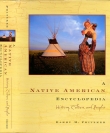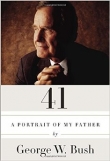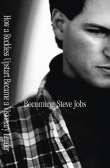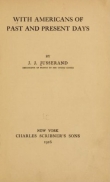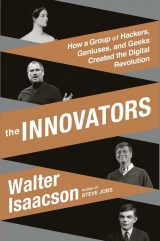
Текст книги "The Innovators: How a Group of Inventors, Hackers, Geniuses, and Geeks Created the Digital Revolution"
Автор книги: Walter Isaacson
Жанр:
Биографии и мемуары
сообщить о нарушении
Текущая страница: 20 (всего у книги 42 страниц)

Ken Kesey (1935–2001) holding a flute on the bus.

Stewart Brand (1938– ).

The first issue, fall 1968.
CHAPTER EIGHT
THE PERSONAL COMPUTER
“AS WE MAY THINK”
The idea of a personal computer, one that ordinary individuals could get their hands on and take home, was envisioned in 1945 by Vannevar Bush. After building his big analog computer at MIT and helping to create the military-industrial-academic triangle, he wrote an essay for the July 1945 issue of the Atlantic titled “As We May Think.”I1 In it he conjured up the possibility of a personal machine, which he dubbed a memex, that would store and retrieve a person’s words, pictures, and other information: “Consider a future device for individual use, which is a sort of mechanized private file and library. . . . A memex is a device in which an individual stores all his books, records, and communications, and which is mechanized so that it may be consulted with exceeding speed and flexibility. It is an enlarged intimate supplement to his memory.” The word intimate was important. Bush and his followers focused on ways to make close, personal connections between man and machine.
Bush imagined that the device would have a “direct entry” mechanism, such as a keyboard, so you could put information and your records into its memory. He even predicted hypertext links, file sharing, and ways to collaborate on projects. “Wholly new forms of encyclopedias will appear, ready made with a mesh of associative trails running through them, ready to be dropped into the memex and there amplified,” he wrote, anticipating Wikipedia by a half century.
As it turned out, computers did not emerge the way that Bush envisioned, at least not initially. Instead of becoming personal tools and memory banks for individuals to use, they became hulking industrial and military colossi that researchers could time-share but the average person could not touch. By the early 1970s innovative companies such as DEC were making minicomputers the size of a small refrigerator, but they dismissed the idea that there would be a market for desktop models that could be owned and operated by ordinary folks. “I can’t see any reason that anyone would want a computer of his own,” DEC president Ken Olsen declared at a May 1974 meeting where his operations committee was debating whether to create a smaller version of its PDP-8 for personal consumers.2 As a result, the personal computer revolution, when it erupted in the mid-1970s, was led by scruffy entrepreneurs in strip malls and garages who started companies with names like Altair and Apple.
THE CULTURAL BREW
The personal computer was made possible by a number of technological advances, most notably the microprocessor, a circuit etched on a tiny chip that integrated all of the functions of a computer’s central processing unit. But social forces also help drive and shape innovations, which then bear the imprint of the cultural milieu into which they were born. Rarely has there been a more potent cultural amalgam than the one that bubbled up in the San Francisco Bay Area beginning in the 1960s, and it turned out to be ripe for producing homebrewed computers.
What were the tribes that formed that cultural mix?3 It began with the pocket protector–wearing engineers who migrated to the area with the growth of defense contractors, such as Westinghouse and Lockheed. Next there arose an entrepreneurial startup culture, exemplified by Intel and Atari, where creativity was encouraged and stultifying bureaucracies disdained. The hackers who moved west from MIT brought their craving for hands-on computers that they could touch and play with. There was also a subculture populated by wireheads, phreakers, and hard-core hobbyists who got their kicks hacking into the Bell System’s phone lines or the time-shared computers of big corporations. And emanating from San Francisco and Berkeley were idealists and community organizers who sought ways, in the words of one of them, Liza Loop, “to co-opt technological advances for progressive purposes and thereby triumph over the bureaucratic mindset.”4
Added to this mix were three countercultural strands. There were the hippies, born out of the Bay Area’s beat generation, whose merry rebelliousness was fueled by psychedelics and rock music. There were the New Left activists, who spawned the Free Speech Movement at Berkeley and the antiwar protests on campuses around the world. And interwoven with them were the Whole Earth communalists, who believed in controlling their own tools, sharing resources, and resisting the conformity and centralized authority imposed by power elites.
As different as some of these tribes were from each other, their worlds intermingled and they shared many values. They aspired to a do-it-yourself creativity that was nurtured by building Heathkit radios as kids, reading the Whole Earth Catalog in college, and fantasizing about someday joining a commune. Ingrained in them was the very American belief, so misunderstood by Tocqueville, that rugged individualism and the desire to form associations were totally compatible, even complementary, especially when it involved creating things collaboratively. The maker culture in America, ever since the days of community barn raisers and quilting bees, often involved do-it-ourselves rather than do-it-yourself. In addition, many of these Bay Area tribes of the late 1960s shared a resistance to power elites and a desire to control their own access to information. Technology should be made open and friendly and convivial rather than daunting and mysterious and Orwellian. As Lee Felsenstein, one of the avatars of many of these cultural strands, put it, “We wanted there to be personal computers so that we could free ourselves from the constraints of institutions, whether government or corporate.”5
Ken Kesey was a muse of the hippie strand of this cultural tapestry. After graduating from the University of Oregon, he went to the Bay Area in 1958 as a graduate student in Stanford’s creative writing program. While there, he worked the overnight shift at a mental hospital and signed up to be a guinea pig in a CIA-funded series of experiments, Project MKUltra, testing the effects of the psychedelic drug LSD. Kesey ended up liking the drug, very much. The combustible combination of creative writing, dropping acid for pay, and working as an orderly in an asylum led to his first novel, One Flew Over the Cuckoo’s Nest.
While others were starting electronics companies in the neighborhood around Stanford, Kesey used the proceeds from his book, combined with some acid he had been able to liberate from the CIA experiments, to form a commune of early hippies called the Merry Pranksters. In 1964 he and his posse embarked on a psychedelic cross-country odyssey in an old International Harvester school bus dubbed Furthur (spelling later corrected) painted in Day-Glo colors.
Upon his return, Kesey began hosting a series of Acid Tests at his home, and at the end of 1965 he decided, since he was an entrepreneur as well as a hippie, to take them public. One of the earliest took place that December at Big Ng’s, a music club in San Jose. Kesey enlisted a bar band that he liked, led by Jerry Garcia, which had just changed its name from the Warlocks to the Grateful Dead.6 Flower power was born.
Concurrently there arose a companion cultural phenomenon, the peace movement, that shared this rebellious spirit. The confluence of hippie and antiwar sensibilities led to memorable period pieces, amusing in retrospect but considered deep at the time, such as psychedelic posters exhorting “Make love not war” and tie-dyed T-shirts featuring peace symbols.
The hippie and antiwar movements were both wary of computers, at least initially. The hulking mainframes with whirring tapes and blinking lights were seen as depersonalizing and Orwellian, tools of Corporate America, the Pentagon, and the Power Structure. In The Myth of the Machine, the sociologist Lewis Mumford warned that the rise of computers could mean that “man will become a passive, purposeless, machine-conditioned animal.”7 At peace protests and hippie communes, from Sproul Plaza at Berkeley to Haight-Ashbury in San Francisco, the injunction printed on punch cards, “Do not fold, spindle or mutilate,” became an ironic catchphrase.
But by the early 1970s, when the possibility of personal computers arose, attitudes began to change. “Computing went from being dismissed as a tool of bureaucratic control to being embraced as a symbol of individual expression and liberation,” John Markoff wrote in his history of the period, What the Dormouse Said.8 In The Greening of America, which served as a manifesto for the new era, a Yale professor, Charles Reich, denounced the old corporate and social hierarchies and called for new structures that encouraged collaboration and personal empowerment. Instead of deploring computers as tools of the old power structure, he argued that they could aid the shift in social consciousness if they were made more personal: “The machine, having been built, may now be turned to human ends, in order that man once more can become a creative force, renewing and creating his own life.”9
A technotribalism began to emerge. Tech gurus such as Norbert Wiener, Buckminster Fuller, and Marshall McLuhan became required reading in communes and dorms. By the 1980s the LSD evangelist Timothy Leary would update his famous mantra “Turn on, tune in, drop out” to proclaim instead “Turn on, boot up, jack in.”10 Richard Brautigan was the poet-in-residence in 1967 at Caltech, and that year he captured the new ethos in a poem, “All Watched Over by Machines of Loving Grace.”11 It began:
I like to think (and
the sooner the better!)
of a cybernetic meadow
where mammals and computers
live together in mutually
programming harmony
like pure water
touching clear sky.
STEWART BRAND
The person who best embodied and most exuberantly encouraged this connection between techies and hippies was a lanky enthusiast with a toothy smile named Stewart Brand, who popped up like a gangly sprite at the intersection of a variety of fun cultural movements over the course of many decades. “The counterculture’s scorn for centralized authority provided the philosophical foundations of the entire personal-computer revolution,” he wrote in a 1995 Time essay titled “We Owe It All to the Hippies.”
Hippie communalism and libertarian politics formed the roots of the modern cyberrevolution. . . . Most of our generation scorned computers as the embodiment of centralized control. But a tiny contingent—later called “hackers”—embraced computers and set about transforming them into tools of liberation. That turned out to be the true royal road to the future . . . youthful computer programmers who deliberately led the rest of civilization away from centralized mainframe computers.12
Brand was born in 1938 in Rockford, Illinois, where his father was a partner in an ad agency and, like so many fathers of digital entrepreneurs, a ham radio operator. After graduating as a biology major from Stanford, where he was in Army ROTC, Brand served two years as an infantry officer, including airborne training and a stint as an Army photographer. He then began a joyful life meandering among different communities at that exciting juncture where performance art and technology intermingle.13
Not surprisingly, life on that techno/creative edge led Brand to become one of the early experimenters with LSD. After being introduced to the drug in a pseudoclinical setting near Stanford in 1962, he became a regular at Kesey’s Merry Prankster gatherings. He also was a photographer, technician, and producer at a multimedia art collective called USCO, which produced events that involved acid rock music, technological wizardry, strobe lights, projected images, and performances that enlisted audience participation. Occasionally they featured talks by Marshall McLuhan, Dick Alpert, and other new age prophets. A promotional piece on the group noted that it “unites the cults of mysticism and technology as a basis for introspection and communication,” a phrase that served as a suitable credo for techno-spiritualists. Technology was a tool for expression that could expand the boundaries of creativity and, like drugs and rock, be rebellious.
For Brand, the 1960s protest slogan “Power to the people” began to ring hollow when used by New Left political activists, but computers offered a true opportunity for individual empowerment. “Power to the people was a romantic lie,” he later said. “Computers did more than politics did to change society.”14 He visited the Stanford Artificial Intelligence Lab and wrote an article for Rolling Stone in 1972 calling it “the most bzz-bzz-busy scene I’ve been around since Merry Prankster Acid Tests.” This counterculture and cyberculture combination, he realized, was a recipe for a digital revolution. “The freaks who design computer science” would wrest power away from the “rich and powerful institutions,” he wrote. “Ready or not, computers are coming to the people. That’s good news, maybe the best since psychedelics.” This utopian vision, he added, was “in line with the romantic fantasies of the forefathers of the science, such as Norbert Wiener, J. C. R. Licklider, John von Neumann, and Vannevar Bush.”15
All of these experiences led Brand to become the impresario and techie for one of the seminal events of the 1960s counterculture, the January 1966 Trips Festival at Longshoreman’s Hall in San Francisco. After the joys of the Acid Tests, which had been held weekly throughout December, Brand proposed to Kesey that they throw a blowout version that would last for three days. The extravaganza opened with Brand’s own troupe, America Needs Indians, performing a “sensorium” that included a high-tech light show, slide projectors, music, and Native American dancers. It was followed by what the program described as “revelations, audioprojections, the endless explosion, the congress of wonders, liquid projections, and the jazz mice.” And that was just the opening night. The next night was kicked off by Kesey, who had been busted for drugs a few days earlier on Brand’s North Beach roof but was out on bail and orchestrating the event from a command scaffold. Featured were the Merry Pranksters and their Psychedelic Symphony, Big Brother and the Holding Company, the Grateful Dead, and members of the Hells Angels motorcycle gang. The writer Tom Wolfe tried to recapture the technodelic essence in his seminal work of New Journalism, The Electric Kool-Aid Acid Test:
Lights and movies sweeping around the hall; five movie projectors going and God knows how many light machines, interferrometrics, the intergalactic science-fiction seas all over the walls, loudspeakers studding the hall all the way around like flaming chandeliers, strobes exploding, black lights with Day-Glo objects under them and Day-Glo paint to play with, street lights at every entrance flashing red and yellow, and a troop of weird girls in leotards, leaping around the edges blowing dog whistles.
The final night celebrated technology even more enthusiastically. “Since the common element of all shows is ELECTRICITY, this evening will be programmed live from stimuli provided by a PINBALL MACHINE,” the program exulted. “The audience is invited to wear ECSTATIC DRESS & bring their own GADGETS (a.c. outlets will be provided).”16
Yes, the Trip Festival’s conjunction of drugs, rock, and technology—acid and a.c. outlets!—was jarring. But it turned out to be, significantly, a quintessential display of the fusion that shaped the personal computer era: technology, counterculture, entrepreneurship, gadgets, music, art, and engineering. From Stewart Brand to Steve Jobs, those ingredients fashioned a wave of Bay Area innovators who were comfortable at the interface of Silicon Valley and Haight-Ashbury. “The Trips Festival marked Stewart Brand’s emergence as a countercultural entrepreneur—but in a deeply technocratic mold,” wrote the cultural historian Fred Turner.17
A month after the Trips Festival, in February 1966, Brand was sitting on his gravelly rooftop in San Francisco’s North Beach enjoying the effects of 100 micrograms of LSD. Staring at the skyline, he ruminated on something that Buckminster Fuller had said: our perception that the world is flat and stretches indefinitely, rather than round and small, is because we have never seen it from outer space. Abetted by the acid, he began to grok the smallness of the earth and the importance of other people appreciating that as well. “It had to be broadcast, this fundamental point of leverage on the world’s ills,” he recalled. “A photograph would do it—a color photograph from space of the earth. There it would be for all to see, the earth complete, tiny, adrift, and no one would ever perceive things the same way.”18 It would, he believed, promote big-picture thinking, empathy for all the earth’s inhabitants, and a sense of connectedness.
He resolved to convince NASA to take such a picture. So, with the offbeat wisdom that comes from acid, he decided to produce hundreds of buttons so that people in the pre-Twitter age could spread the word. “Why haven’t we seen a photograph of the whole Earth yet?” they read. His plan was goofy-simple: “I prepared a Day-Glo sandwich board with a little sales shelf on the front, decked myself out in a white jump suit, boots and costume top hat with crystal heart and flower, and went to make my debut at the Sather Gate of the University of California in Berkeley, selling my buttons for twenty-five cents.” University officials did him the favor of throwing him off campus, which prompted a story in the San Francisco Chronicle, thus helping publicize his one-man crusade. He took it on the road to other colleges across the country, ending at Harvard and MIT. “Who the hell’s that?” asked an MIT dean as he watched Brand give an impromptu lecture while selling his buttons. “That’s my brother,” said Peter Brand, an MIT instructor.19
In November 1967 NASA complied. Its ATS-3 satellite took a picture of Earth from twenty-one thousand miles up, which served as the cover image and title inspiration for Brand’s next venture, the Whole Earth Catalog. As its name implied, it was (or at least dressed itself in the guise of) a catalogue, one that cleverly blurred the distinction between consumerism and communalism. Its subtitle was “Access to Tools,” and it combined the sensibilities of the back-to-the-land counterculture with the goal of technological empowerment. Brand wrote on the first page of the first edition, “A realm of intimate, personal power is developing—power of the individual to conduct his own education, find his own inspiration, shape his own environment, and share his adventure with whoever is interested. Tools that aid this process are sought and promoted by the Whole Earth Catalog.” Buckminster Fuller followed with a poem that began, “I see God in the instruments and mechanisms that work reliably.” The first edition featured such items as Norbert Wiener’s book Cybernetics and a programmable HP calculator, along with buckskin jackets and beads. The underlying premise was that a love of the earth and a love of technology could coexist, that hippies should make common cause with engineers, and that the future should be a festival where a.c. outlets would be provided.20
Brand’s approach was not New Left political. Nor was it even antimaterialist, given his celebration of games and gadgets you could buy. But he did pull together, better than anyone, many of the cultural strands of that period, from acid-dropping hippies to engineers to communal idealists who sought to resist the centralized control of technology. “Brand did the marketing work for the concept of the personal computer through the Whole Earth Catalog,” said his friend Lee Felsenstein.21
DOUGLAS ENGELBART
Shortly after the first edition of the Whole Earth Catalog came out, Brand helped to produce a happening that was an odd echo of his techno-choreography of the January 1966 Trips Festival. Dubbed “the Mother of All Demos,” the December 1968 extravaganza became the seminal event of the personal computer culture, just as the Trips Festival had been for the hippie culture. It happened because, like a magnet, Brand naturally attracted and attached himself to interesting people. This time it was an engineer named Douglas Engelbart, who had taken on as his life’s passion inventing ways that computers could augment human intelligence.
Engelbart’s father, an electrical engineer, had a shop in Portland, Oregon, where he sold and repaired radios; his grandfather, who operated hydropower dams in the Pacific Northwest, liked to take the family inside the goliath plants to see how the turbines and generators worked. So it was natural that Engelbart developed a passion for electronics. In high school he heard that the Navy had a program, cloaked in secrecy, to train technicians in a mysterious new technology called radar, and he studied hard to make sure he could get in it, which he did.22
His great awakening came while serving in the Navy. He was loaded onto a ship that set sail from just south of the Bay Bridge in San Francisco, and as they were waving good-bye, an announcement came on the public address system that the Japanese had surrendered and World War II was over. “We all shouted,” Engelbart recounted, “ ‘Turn around! Let us go back and celebrate!’ ” But the ship kept sailing, “right out into the fog, into the seasickness,” on to Leyte Gulf in the Philippines.23 On Leyte Island, Engelbart secluded himself whenever possible in a Red Cross library in a thatched hut on stilts, and there he became enthralled by a heavily illustrated Life magazine reprint of Vannevar Bush’s Atlantic article “As We May Think,” the one that envisioned the memex personal information system.24 “The whole concept of helping people work and think that way just excited me,” he recalled.25
After his Navy service, he got an engineering degree from Oregon State and then worked at the forerunner to NASA at the Ames Research Center in Silicon Valley. Painfully shy, he joined an intermediate Greek folk-dancing class at the Palo Alto Community Center in order to meet a woman he could marry, which he did. On the day after his engagement, as he was driving to work, he felt a frightening, life-altering apprehension: “By the time I got to work, I had this realization that I didn’t have any more goals.”26
For the next two months, he assiduously tended to the task of finding for himself a worthy life goal. “I looked at all the crusades people could join, to find out how I could retrain myself.” What struck him was that any effort to improve the world was complex. He thought about people who tried to fight malaria or increase food production in poor areas and discovered that led to a complex array of other issues, such as overpopulation and soil erosion. To succeed at any ambitious project, you had to assess all of the intricate ramifications of an action, weigh probabilities, share information, organize people, and more. “Then one day, it just dawned on me—BOOM—that complexity was the fundamental thing,” he recalled. “And it just went click. If in some way, you could contribute significantly to the way humans could handle complexity and urgency, that would be universally helpful.”27 Such an endeavor would address not just one of the world’s problems; it would give people the tools to take on any problem.
The best way to help people handle complexity was along the lines that Bush had proposed, Engelbart decided. As he tried to imagine conveying information on graphic screens in real time, his radar training came in handy. “It was within an hour that I had the image of sitting at a big screen with all kinds of symbols,” he recalled, “and you could be operating all kinds of things to drive the computer.”28 That day he set out on a mission to find ways to allow people to visually portray the thinking they were doing and link them to other people so they could collaborate—in other words, networked interactive computers with graphic displays.
This was in 1950, five years before Bill Gates and Steve Jobs were born. Even the very first commercial computers, such as UNIVAC, were not yet publicly available. But Engelbart bought into Bush’s vision that someday people would have their own terminals, which they could use to manipulate, store, and share information. This expansive conception needed a suitably grand name, and Engelbart came up with one: augmented intelligence. In order to serve as the pathfinder for this mission, he enrolled at Berkeley to study computer science, earning his doctorate in 1955.
Engelbart was one of those people who could project intensity by speaking in an eerily calm monotone. “When he smiles, his face is wistful and boyish, but once the energy of his forward motion is halted and he stops to ponder, his pale blue eyes seem to express sadness or loneliness,” a close friend said. “His voice, as he greets you, is low and soft, as though muted from having traveled a long distance. There is something diffident yet warm about the man, something gentle yet stubborn.”29
To put it more bluntly, Engelbart sometimes gave the impression that he had not been born on this planet, which made it difficult for him to get funding for his project. He finally was hired in 1957 to work on magnetic storage systems at the Stanford Research Institute, an independent nonprofit set up by the university in 1946. A hot topic at SRI was artificial intelligence, especially the quest to create a system that mimicked the neural networks of the human brain.
But the pursuit of artificial intelligence didn’t excite Engelbart, who never lost sight of his mission to augment human intelligence by creating machines like Bush’s memex that could work closely with people and help them organize information. This goal, he later said, was born out of his respect for the “ingenious invention” that was the human mind. Instead of trying to replicate that on a machine, Engelbart focused on how “the computer could interact with the different capabilities that we’ve already got.”30
For years he worked on draft after draft of a paper describing his vision, until it grew to forty-five thousand words, the length of a small book. He published it as a manifesto in October 1962 titled “Augmenting Human Intellect.” He began by explaining that he was not seeking to replace human thought with artificial intelligence. Instead he argued that the intuitive talents of the human mind should be combined with the processing abilities of machines to produce “an integrated domain where hunches, cut-and-try, intangibles, and the human ‘feel for a situation’ usefully co-exist with powerful concepts, streamlined terminology and notation, sophisticated methods, and high-powered electronic aids.” In painstaking detail, he gave many examples of how this human-computer symbiosis would work, including an architect using a computer to design a building and a professional putting together an illustrated report.31
As he was working on the paper, Engelbart wrote a fan letter to Vannevar Bush, and he devoted an entire section of his paper to describing the memex machine.32 Seventeen years after Bush had written “As We May Think,” there was still a radical feel to his concept that humans and computers should interact in real time through simple interfaces that included graphical screens, pointers, and input devices. Engelbart emphasized that his system wouldn’t be just for math: “Every person who does his thinking with symbolized concepts (whether in the form of the English language, pictographs, formal logic, or mathematics) should be able to benefit significantly.” Ada Lovelace would have been thrilled.
Engelbart’s treatise appeared the same month that Licklider, who had explored the same concepts two years earlier in his “Man-Computer Symbiosis” paper, took over ARPA’s Information Processing Techniques Office. Part of Licklider’s new job was to give out federal grants to promising projects. Engelbart got in line. “I was standing at the door with this 1962 report and a proposal,” he recalled. “I thought, ‘Oh boy, with all the things he’s saying he wants to do, how can he refuse me?’ ”33 He couldn’t, so Engelbart got an ARPA grant. Bob Taylor, who was then still at NASA, also gave Engelbart some funding. Thus it was that he was able to create his own Augmentation Research Center at SRI. It became another example of how government funding of speculative research eventually paid off hundreds of times over in practical applications.
THE MOUSE AND NLS
The NASA grant from Taylor was supposed to be applied to a stand-alone project, and Engelbart decided to use it to find an easy way for humans to interact with machines.34 “Let’s go after some screen-select devices,” he suggested to his colleague Bill English.35 His goal was to find the simplest way for a user to point to and select something on a screen. Dozens of options for moving an on-screen cursor were being tried by researchers, including light pens, joysticks, trackballs, trackpads, tablets with styli, and even one that users were supposed to control with their knees. Engelbart and English tested each. “We timed how long it took each user to move the cursor to the object,” Engelbart said.36 Light pens seemed the simplest, for example, but they required a user to pick them up and put them down each time, which was tiresome.
They made a chart of all the advantages and drawbacks of each device, which helped Engelbart imagine devices that hadn’t yet been conceived. “Just as the periodic table’s rules have led to the discovery of certain previously unknown elements, this grid ultimately defined the desirable characteristics of a device that didn’t yet exist,” he said. One day in 1961 he was at a conference and began to daydream. He recalled a mechanical device that had fascinated him in high school, a planimeter, that could calculate the area of a space by being rolled around its perimeter. It used two perpendicular wheels, one horizontal and the other vertical, to tote up the distance it was rolled in each direction. “Just thinking about those two wheels, soon the rest of it was very simple, so I went and made a sketch,” he recalled.37 In his pocket notebook he showed how the device could roll around a desktop and its two wheels would register higher or lower voltages as they turned in each direction. That voltage could be transmitted through a cord to the computer screen to move a cursor up and down and back and forth.



